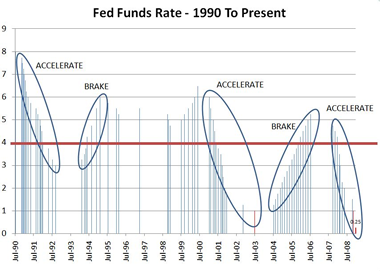SEARCH BLOG: SOCIAL SECURITY
Social security is going broke by 2041 unless we do something. What can we do? We're doomed to die alone in the woods devoured by coyotes [that's a long story].
Well, irrational fears aside, the funding issue for social security can be resolved in short order without raising taxes. First let's have a brief history lesson.
From Wikipedia:
The original 1935 statute paid retirement benefits only to the primary worker. Many types of people were excluded, mainly farm workers, the self-employed, and anyone employed by an employer of fewer than ten people. These limitations, intended to exclude those from whom it would be difficult to monitor compliance, covered approximately half of the civilian labor force in the United States.
The 1935 Act also contained the first national unemployment-compensation program, aid to the states for various health and welfare programs, and the Aid to Dependent Children program. The initial tax rate was 2.0% of the first $3,000 of the employee's earnings, shared equally between the employee and the employer. The tax rate has been raised several times over the years, beginning in 1950, when it was raised to 3.0%. [9]

A poster for the expansion of the Social Security Act In 1939, the 1937 Federal Insurance Contributions Act (FICA) tax was amended in three important ways:
- The widowed, nonworking spouse of a someone entitled to an old-age benefit also became entitled to an old-age benefit.
- Survivors (widows and orphans) became eligible for a benefit.
- Retirees who had never paid any FICA taxes became eligible for old-age benefits. This feature was very popular among the millions of elderly Americans hard hit by the Great Depression, and fatefully decoupled benefits eligibility from work history.
In 1956, the tax rate was raised to 4.0% (2.0% for the employer, 2.0% for the employee) and disability benefits were added. Also in 1956, women were allowed to retire at age 62 with reduced benefits (70%). In 1961, retirement at age 62 was extended to men, and the tax rate was increased to 6.0%.
Medicare was added in 1965 by the Social Security Act of 1965, part of President Lyndon B. Johnson's "Great Society" program. (See List of Social Security legislation (United States).) Social Security was changed to withdraw funds from the independent "Trust" and put it into the General fund for additional congressional revenue.
Automatic annual cost-of-living adjustments (COLAs), not requiring legislation, began in 1975.[10]
During the Carter administration, immigrants who had never paid into the system became eligible for SSI (Supplemental Security Income) benefits when they reached age 65. SSI is not a Social Security benefit, but a welfare program, because the elderly and disabled poor are entitled to SSI regardless of work history. Likewise, SSI is not an entitlement, because there is no right to SSI payments.
The 1983 amendments to the SSA, resulting from the 1982 report of the Greenspan Commission[citation needed] empaneled to investigate the long-run solvency of Social Security, taxed Social Security benefits for the first time: benefits in excess of a household income threshold, generally $25,000 for singles and $32,000 for couples (the precise formula computes and compares three different measures) became taxable. The amendments also gradually increased the age of eligibility for full old-age benefits, from 65 to 67 for those born after 1959.
In 1940, benefits paid totaled $35 million. These rose to $961 million in 1950, $11.2 billion in 1960, $31.9 billion in 1970, $120.5 billion in 1980, and $247.8 billion in 1990 (all figures in nominal dollars, not adjusted for inflation). In 2004, $492 billion of benefits were paid to 47.5 million beneficiaries.
One other piece of information is needed before the solution is revealed.
A preliminary report from the US Centers for Disease Control and Prevention (CDC) based on national statistics for 2005 puts life expectancy in the US at 78 years, a figure that has been increasing steadily over the last 50 years. In 1995 life expectancy in the US was 76 years and in 1955 it was 70 years. Racial and gender differences in life expectancy are also reducing.
The simple solution:
- Increase the early eligibility age from 62 to 66 and the full retirement benefits age from the current 67 to 70.
- Make mandatory retirement illegal before age 72 to ensure no one is forced to leave a job before retirement benefits are available
- Require legal residence/citizenship for eligibility
The reasons this would work:
- The funding problem is an actuarial issue, not a cash input one
- Eligibility has been expanded beyond manageable limits or reasonable limits
This would place any hardship on the aging population as opposed to those who receive benefits from ancillary programs attached to Social Security. Those could and should be reviewed separately.
Just one other thought: delaying the time that social security benefits are available would serve as an incentive to 1) delay starting a working career to 2) become skilled/educated in something that they really want to do for a long time or 3) move to a country that offers nationalized everything like Britain (where you are granted all kinds of benefits, but you have to pull your own teeth to get them).
..

































